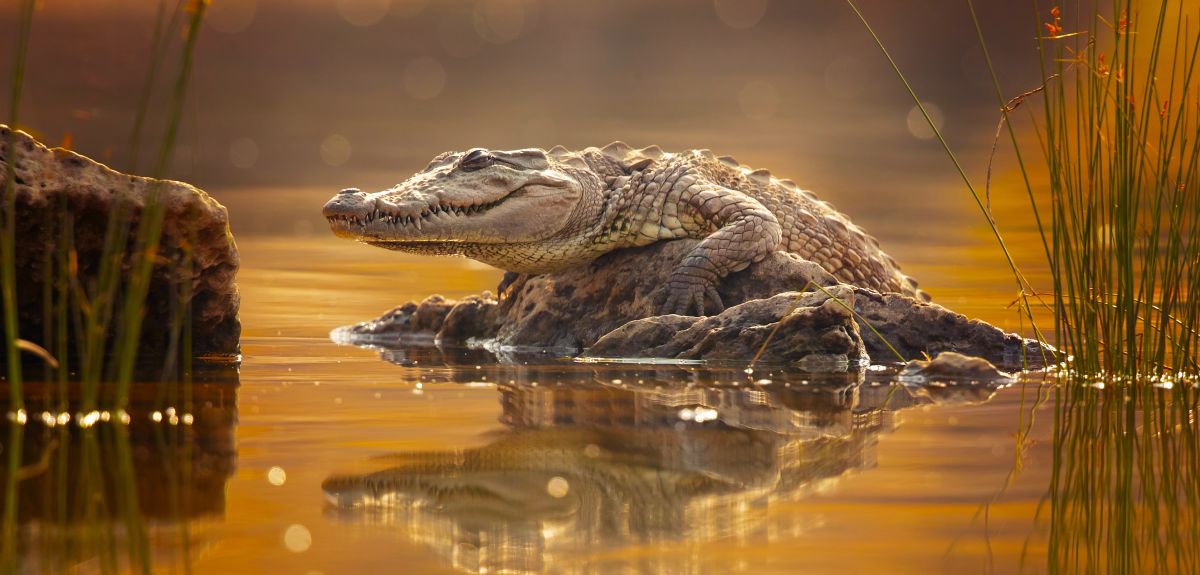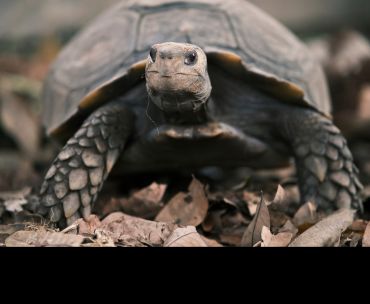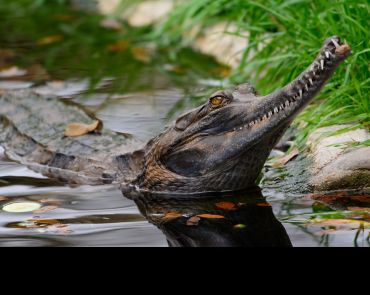
Turtle and crocodile species with unique characteristics are more likely to go extinct
New research led by the University of Oxford has revealed that the most endangered turtle and crocodile species are those that are most unique. Their loss could have widespread impacts on the ecosystems they live in since they carry out critical processes important for many other species. The results have been published in Nature Communications.
When it comes to the conservation of turtles and crocodiles, we are dealing with a critical scenario. Furthermore, our actions are affecting unevenly more so those species that are characterised by unique life strategies. Once they are gone, these life strategies will be gone too, with no other species being able to provide a back-up.
Professor Rob Salguero-Gómez, Department of Biology, University of Oxford
Turtles and crocodiles are two of the world's most endangered animal groups, with approximately half of species globally threatened (International Union for Conservation of Nature, IUCN). Greater understanding on which species are most threatened and why is urgently needed to inform conservation efforts to save them.
In a new study led by researchers at the Department of Biology, University of Oxford, an international team examined the greatest risks to wild populations of turtles and crocodiles worldwide. The results demonstrate that the most endangered turtles and crocodile species are those that have evolved unique life strategies. These species typically carry out highly specific roles within their ecosystems that are unlikely to be taken up by other species if they disappeared.
The researchers used models to simulate extinctions as a result of human-led threats, assessing the impacts that would be seen for species with different life strategies. A life strategy is how an organism divides its resources and energy between its own survival, reproduction, and growth.
Professor Rob Salguero-Gómez (Department of Biology, University of Oxford), senior author of this research, commented: ‘A key finding is that the threats do not affect all species equally; they tend to impact particular life history strategies. For example, unsustainable consumption of turtles and crocodiles mainly affects the longest-lived species with the largest clutch sizes, such as sea turtles.’
Key findings:
- The results indicated that if all species of turtles, tortoises, and crocodiles currently assess as Critically Endangered according to the IUCN went extinct, 13% of unique life strategies would be lost.
- Habitat loss was the main threat to all species of turtles, tortoises, and crocodiles worldwide. Compared to any other threat examined, this had the potential to cause double the functional diversity loss (the range of things that organisms do in ecosystems).
- Climate change and global trade were also major threats that affected all species, independent of their life history strategy.
- Species with unique life history strategies were also particularly affected by unsustainable local consumption, diseases, and pollution.
- Species with ‘slow’ life histories (characterised by late maturity and low numbers of offspring) were particularly vulnerable to threats from invasive species and diseases. For example, in Sumatra, a significant threat to the ‘False Gharial’ (Tomistoma schlegelii) is predation of their eggs by the introduced wild pig (Sus scrofa).
- Threats from pollution were particularly associated with species with high reproductive output (higher clutch sizes), such as freshwater turtles and saltwater crocodiles. For example, the three-striped roofed turtle (Batagur dhongoka) is highly susceptible to major hydrological projects and their impacts on river flow dynamics and nesting beaches, and water pollution.
- Local consumption was a particular threat for species with higher clutch sizes, and longer maximum lifespans. For example, the long-lived Asian Giant tortoise (Manouria emys) is generally killed and butchered on the spot for its meat whenever encountered by local hunter-gatherers through much of its range, as well as collected for export trade for consumption in East Asia.
 An Asian Giant tortoise (Manouria emys). Image credit: Shutterstock.
An Asian Giant tortoise (Manouria emys). Image credit: Shutterstock.Dr Roberto Rodriguez (Department of Biology, University of Oxford), lead author of the study, said: ‘The main threat to the viability of these groups of reptiles is habitat loss and fragmentation, which is especially common in species inhabiting the Northern hemisphere. The disappearance of wetlands, increasing urbanisation, and the development of intensive agriculture, which already have tangible effects, will likely continue to negatively affect these species and their ability to persist in the mid- to long-term.’
Other threats, however, had a more global and untargeted effect. Dr Molly Grace (Department of Biology, University of Oxford), co-author of the study, added: ‘While sustainable use and trade of wildlife can sometimes benefit species conservation, unsustainable trade of live animals or their parts threaten these reptiles throughout the world, regardless of their life history strategies.’ The capture and trafficking of turtles is common for keeping them in captivity, and crocodile skin is of great commercial interest; for example, although there are some controls on trade, Mugger crocodiles (Crocodylus palustris) in Pakistan are still illegally hunted for their skin.
 A False Gharial (Tomistoma schlegelii). Image credit: Shutterstock.
A False Gharial (Tomistoma schlegelii). Image credit: Shutterstock.The researchers add that people concerned about the loss of turtles and crocodiles can support organisations that develop conservation projects to protect their habitats and wild populations. Responsible ecotourism or citizen science activities, such as volunteering programmes or crowdsourced data collection, can also offer opportunities to positively contribute towards turtle and crocodile conservation.
The paper ‘Anthropogenic impacts on threatened species erode functional diversity in chelonians and crocodilians’ has been published in Nature Communications.
 Expert Comment: Chatbot-driven sexual abuse? The Grok case is just the tip of the iceberg
Expert Comment: Chatbot-driven sexual abuse? The Grok case is just the tip of the iceberg
 New study finds that stopping weight-loss drugs is linked to faster regain than ending diet programmes
New study finds that stopping weight-loss drugs is linked to faster regain than ending diet programmes